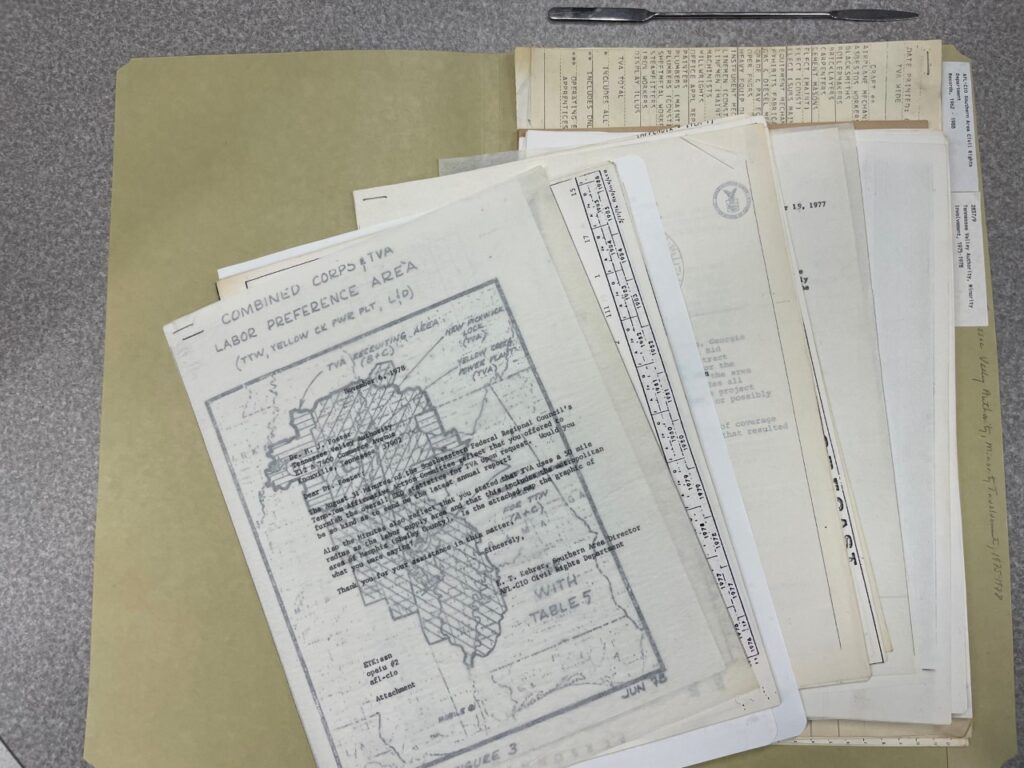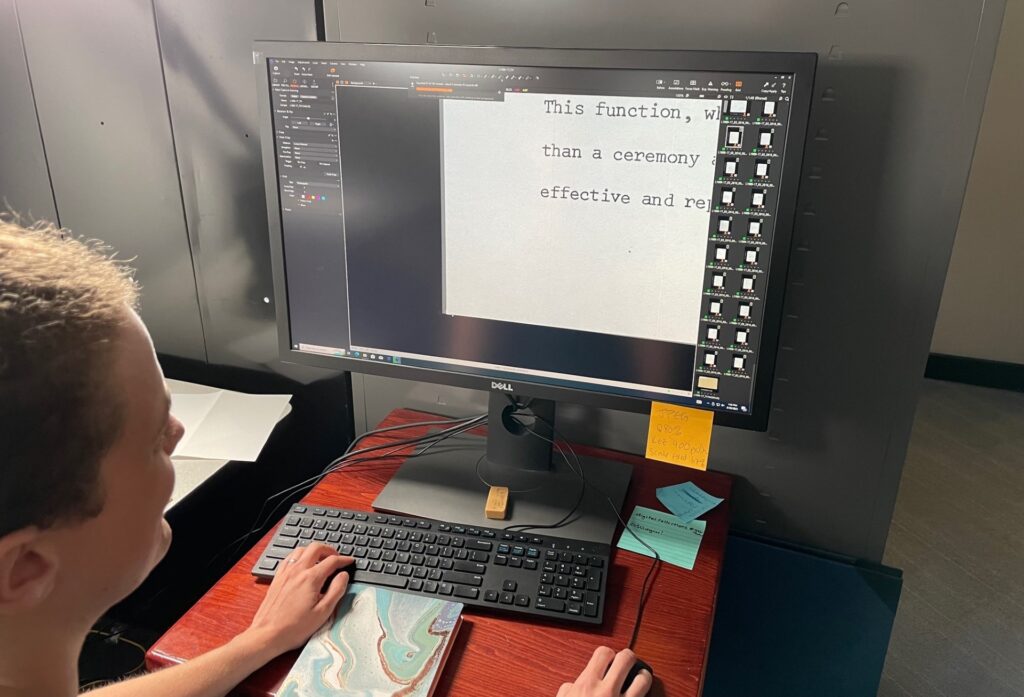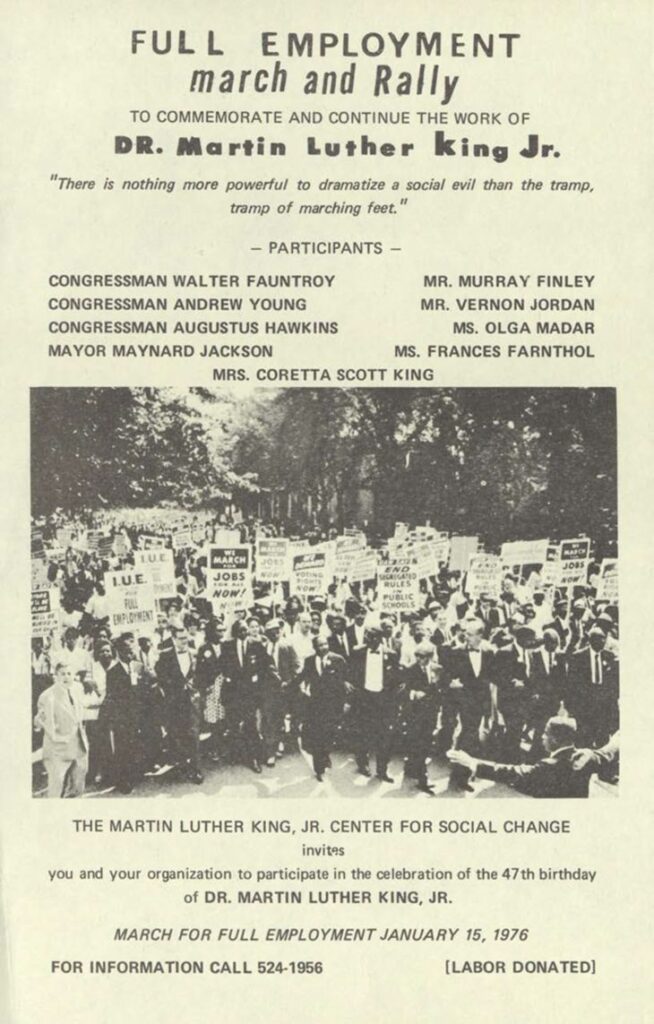Identifying Items for “Fighting for Freedom” Exhibit
When Georgia State University applied for a Council on Library and Information Resources (CLIR) Hidden Collections grant in 2021 to digitize the records of the AFL-CIO Civil Rights Department’s Southeast Division, our goal was to increase public awareness of these records and their usability for teaching and research. In addition to making digitized versions of the records available online, we also partnered with the Digital Library of Georgia (DLG) to produce an online exhibit on the history of the Southeast Division, to help a wide audience learn about the Division and its records regardless of their research interests. The exhibit would allow us to showcase select objects from the Southeast Division records, primarily historical documents.

Identifying objects to use in the exhibit presented a challenge because of the scale of the Southeast Division records held by GSU, estimated at 95,000 individual pages of documents covering 78 feet of shelf space, in six separate collections. The existing finding aids for these collections included titles of folders and series of related folders, as well as some supplementary collection-level description – enough to give us a general sense of the content of the collections, but a very limited idea of the specific objects we might find. Fortunately, the digitization process would require us to examine the contents of each folder anyway, while scanning materials and creating updated descriptions for the digitized records. As such, it was easy to integrate searching for exhibit materials into our digitization workflow.
Digitization of the Southeast Division records began in Fall semester of 2021, while development of the exhibit was not set to start until Fall 2022. While the exhibit team would make the final decisions about the content of the exhibit, from the start of digitization we had a set of criteria for which objects would be good candidates for inclusion:
- Objects that represented the major areas of the Southeast Division’s activities. From the existing finding aids, we knew that these included liaison work with civil rights organizations, support for equal employment opportunity initiatives, and promotion of AFL-CIO policies on discrimination to union locals.
- Objects that put the Southeast Division in its historical context, particularly those that illustrated the relationships between the AFL-CIO, civil rights organizations, and Black labor organizations.
- Visually distinctive and impactful objects that would be easy for audiences to parse in an online format, provided these objects also met our other criteria.
During digitization, we kept an eye out for objects that met these criteria at several points in the digitization process, but especially during the post-scanning quality control and description stages when we could take time to closely examine the newly-digitized images. We noted objects that met our criteria in a recording spreadsheet, listing physical and digital locations and providing notes on the condition and content of the object. In some cases, we also created notes for entire folders or parts of folders, to provide the exhibit team more guidance for their own search process.

One example of the kinds of objects we identified during digitization, and which was ultimately used in the exhibit, is this 1976 flyer for a march and rally in support of full employment, organized by the Martin Luther King, Jr. Center for Nonviolent Social Change as part of the commemoration of MLK, Jr.’s birthday. This flyer was one of several items we noted as demonstrating the collaboration between the Southeast Division, which helped organize the full employment rally, and the King Center. It meets our content criteria, and its distinctive visual appearance makes it a good choice for use in the exhibit.

The Special Collection & Archives department would like to thank our sponsors who helped make this exhibit possible: Council on Library & information Resources, Georgia AFL-CIO, IBEW Local 175, United Steelworkers District 9.